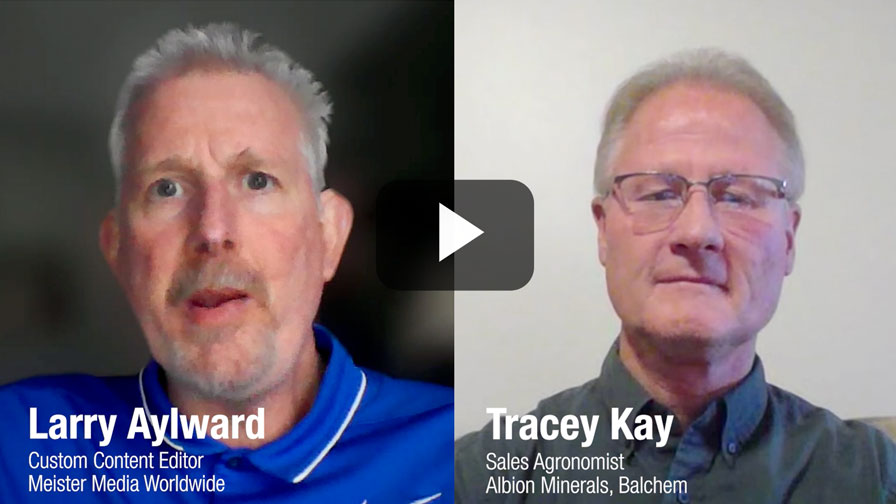How to Get Growing with High Tunnels

For those looking to get into protected agriculture, hoop houses or high tunnels might be a logical first step. Protected agriculture is any covered protection that isn’t in a greenhouse — low tunnels, high tunnels, etc. Growers with high tunnels not only help conserve critical resources but also get a boost with season extension throughout the country – starting earlier and growing later in the year.
For growers interested in high tunnels, USDA’s Natural Resource Conservation Service (NRCS) offers financial and technical assistance through the Environmental Quality Incentives Program (EQIP).
“There’s an increase in productivity for a smaller footprint as it were,” says Jimmy Bramblett, Deputy Chief for Programs for USDA’s Natural Resources Conservation Service.
Bramblett says since 2010, more than 24,000 growers have enrolled in EQIP and have received more than $180 million total in assistance. Bramblett says that equates to around $7,400 per high tunnel.
Why Use High Tunnels?
Growers who use high tunnels say it’s easy to extend the season even in Southern states. There’s an added benefit of moisture management and pest controls.
“Things they [growers] might need to think about with high tunnels are that these are lightweight houses. It doesn’t rain under them,” Bramblett says. “Producers interested in growing under high tunnels need to consider ‘what am I going to do for irrigation?’ How am I going to get water to these plants?”
Growers should also consider the higher humidity under the tunnels, which can cause issues like powdery mildew.
Bramblett says this is where growers can use that technical assistance from NRCS.
What NRCS Offers
NRCS offers both technical and financial assistance. A major component of the technical assistance is that a local NRCS conservationist will work with you to develop a conservation plan based on your management goals.
Before developing the plan, the conservationist will help you determine which conservation practices will best suit your needs. This can take the form of high tunnels to more complex practices such as installation of irrigation. NRCS also can help you select the best site for your high tunnels, manage runoff from the high tunnel, plant trees and shrubs to attract pollinators, and improve soil health.
“When we talk about high tunnels, that is just one practice, and we may have a series of other conservation practices associated with that particular farm,” Bramblett says. “We try to offer as much conservation to our clients as they are interested in adopting.”
This assistance also takes the form of conservation practice specifications, which include job sheets and designs, such as irrigation system design or recommended seeding rates for cover crops. An irrigation water management plan explains how to use the system for the desired crop, and how to effectively divert rainwater runoff from the high tunnel structure into grassed waterways and outlets to prevent soil erosion.
“If they need a custom-built micro-irrigation system, our engineers can provide technical assistance for how much water flow there needs to be in that particular high tunnel, depending on the type of crop grown as well,” he says.
Then, there’s also financial assistance. For a grower interested in seeking some assistance with the purchase of high tunnels, Bramblett says the first step is to establish farm records, including a farm tract number, with USDA’s Farm Service Agency (FSA) if you haven’t used that agency’s services before. NRCS uses data from FSA to help develop farm conservation plans.
“We always try to start as local as we can. Using regional payment schedules, we identify the typical cost associated with a high tunnel, and each state conservationist makes a determination as to what amount to offer — 50% or more,” Bramblett says. “Generally, it’s around 75% of the typical cost of a high tunnel that the states offer.”
Historically underserved growers — including veterans and beginning growers who qualify — may receive payment rates up to 90%. These growers also are eligible for advance payments to help offset the costs of supplies and contracting work.
Growers with an adjusted gross income of $900,000 average or more over three-year periods are not eligible for financial assistance, but they can receive technical assistance, if eligible. Growers also need to be compliant with highly erodible land and wetland conservation requirements.
“We get a lot more requests than we have resources for,” Bramblett says.
For More Information
- Growers interested in learning more about high tunnels can visit NRCS.USDA.gov/HighTunnel.
- Growers interested in applying for other assistance through EQIP can visit NRCS.USDA.gov/EQIP.
- To find your local NRCS office, visit Farmers.gov/Service-Locator.










